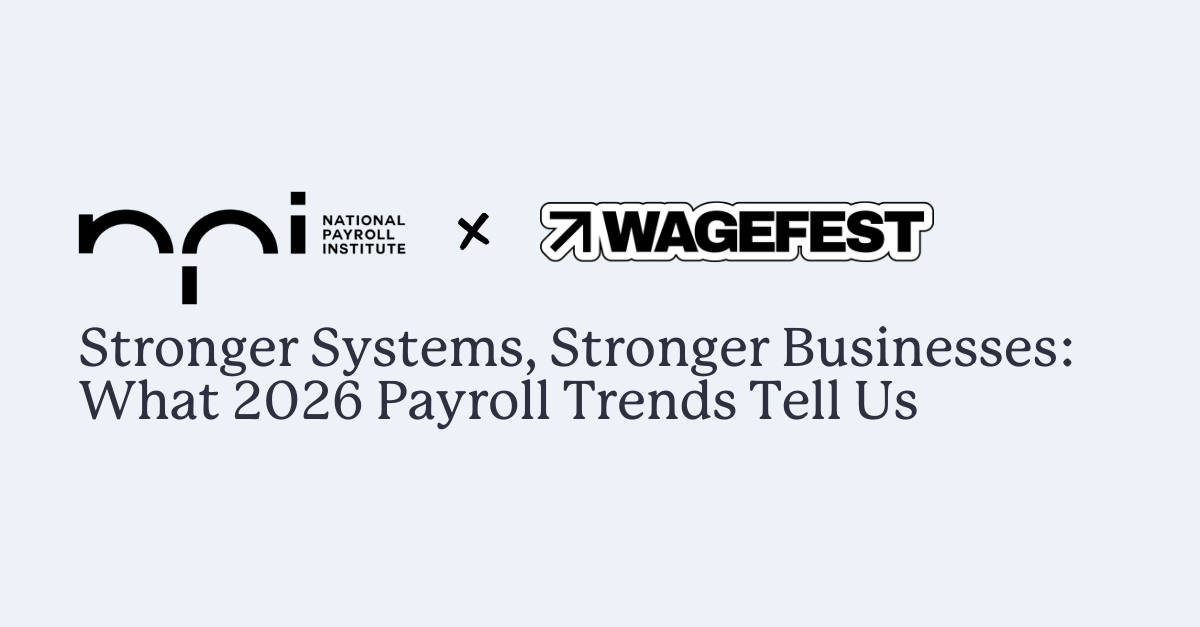Become an insider!
Get our latest payroll and small business articles sent straight to your inbox.
With the right approach, switching payroll companies can be painless — and even beneficial for your business and employees alike.
When you’re already juggling multiple responsibilities, changing a key business tool can feel like more hassle than it’s worth. Especially when it comes to something as sensitive as your payroll. The last thing you want is a mistake that could leave you or your employees frustrated.
For many small business owners, this line of thinking leads to sticking with the payroll service provider they’ve already got. Even when that’s not really working.
But, apart from ditching what doesn’t work, making the switch is also a great opportunity to cut costs, improve regulatory compliance, and streamline your day-to-day workload. Here’s everything you need to know to ensure a seamless transition.
Why switch payroll companies?
Let’s start with one of the most obvious questions: why switch payroll providers in the first place? There are a few good reasons people make the change, but in most cases it’s because the current provider isn’t fully meeting the business’s needs. Or, because other options offer better customer service or tech.
The most common pain points we’ve seen include:
- Poor customer support
- Outdated technology that doesn’t meet business needs
- Software that’s difficult to integrate with other systems (like human resources or accounting software)
- Hidden or high costs
- Inaccuracies and errors that have caused tension with employees
- Difficulty accessing important information or metrics
Another common reason is payroll software that is clunky and hard to use, making it just as frustrating as manual data entry.
When is the best time to switch payroll companies and why?
Once you’ve decided to switch, the next question is: when is the right time to do it? Obviously, there isn’t a hard and fast rule. As you’ll see from the experts we asked, the timing that works for your business might be different from others. But in general we recommend setting your start date for the beginning of a new year.
When we asked our experts, bookkeepers who handle payroll for small business clients, about the reasons they do or don’t switch payroll companies in time for the start of a new year, these are the pros and cons they shared with us.
Reasons to switch payroll companies at the new year
Reduced admin work and reduced chance for errors
When you start a new year, you’re effectively starting with a clean slate. There’s no year-to-date (YTD) data to enter which means less potential for data entry errors, and a quicker and easier setup process for your new system with less data transfer to worry about. All you’ll be entering in is your business and employee information, and then you can start processing.
The only other step you’ll need to take as an employer is issuing workers a Record of Employment (ROE) for switching payroll companies. The change of provider ROEs are one of the legal requirements as a part of this process.
Tanya Hilts (CPB, FCPB, AIA, L5CA), CEO and founder of Cloud Business Services and Bookkeeper’s Bootcamp says, “Switching a client for January 1 means only ROEs have to be issued.”
In other words, starting in a new software or with a new provider at the beginning of the year means the only things you’ll need to worry about are setting up the new system and issuing ROEs.
No need to worry about historical data for terminated employees
Switching for the start of the year also means you don’t need to worry about details like historical payroll data for terminated employees. Kathleen King, owner of White Oak Consulting, notes, “[We] switched a client mid-year, and they had excluded terminated employees, so they were not included in their reporting.”
Tanya has also seen scenarios where employees no longer employed with a company are missed in the new system when they should have been included for accurate reporting and tasks such as year-end processing. She confirms that many mistakes are made when payroll is switched during the year and the year’s worth of data needs to be recaptured.
Reasons to not switch payroll companies at the new year
The new year is busy with payroll tax season
While switching payroll providers in January has clear benefits, there are additional considerations that may mean doing so isn’t the right choice for your business.
For one thing, the first quarter of the year is tax season for small businesses. Sorting out employer and employee tax forms can take some time, even with the best payroll software simplifying the process.
For tax and accounting professionals like Melissa Lenos (CPB, PCP), Partner at King Business Solutions Inc., that makes it a poor time for payroll migration. And, if you’re a small business owner doing your own payroll, you might be thinking along the same lines.
“[Changing software solutions is] the last thing I want to do in the new year when all my T4s are due,” Melissa says. “I like doing my transfers any time of the year but January and February! I also try to plan my transfers so there is no long weekend.”
She adds that although switching payroll providers mid-year takes a bit of time, it does give you a chance to recheck year-to-date numbers. And that might not be the worst idea if one of the reasons for switching payroll vendors is because of previous payroll errors.
Juggling multiple changes at the same time
The beginning of the year can also be a tricky time if you’re taking on new hires or making changes to comply with new regulations. The advantage is that you’re starting everything fresh at the same time, which makes things easier for new employees just coming into the business. The disadvantage is that changing payroll systems can be an added complication if you’ve already got your hands full with training new people and implementing new steps in your existing payroll processes.
Other factors to consider before you switch payroll companies or software.
Besides the timing, there are several other things to think about when you’re planning to switch your payroll company.
Return on Investment (ROI)
One of the most important considerations when switching your software is the benefit to your bottom line. Factors like the cost of each payroll service, the time spent using them, and features that make life easier should all be weighed. As should any pain points, like costly payroll errors, that you think a new service might be able to solve.
As Tanya explains, it’s about more than just the cash you’re saving on a subscription. “You should weigh out the ROI based on the pain you’re experiencing with the current payroll provider [compared] to the pain of transferring.”
Data migration and security
It shouldn’t be a hassle to import your existing data into a new system, so look for a software or provider that makes it easy. Equally important is making sure sensitive information like tax data, personal data, and historical payroll figures are transferred accurately and kept secure. For example, it’s worth checking if the payroll company you have your eye on is compliant with data privacy laws. Any solution worth your time will offer robust encryption and data protection measures.
Integration options
You should look for a payroll solution that makes it easy to switch teams. That includes making sure the new option you’re considering has built-in functionality for importing data from any existing accounting software you use, and that it supports integrations with other systems as needed.
Training and onboarding
An ideal platform is one that makes it super simple to train existing staff members and onboard new ones. That task is much easier if your new provider has training resources available like tutorials or onboarding support for whoever will be managing the payroll process.
Having employee self-service (ESS) features (like looking up pay stubs) can also be a bonus, especially if it reduces the amount of admin that you, as the business owner, need to deal with.
Contractual and cost considerations
Lastly, it’s worth reviewing your contractual obligations with your current provider, as well as any hidden costs associated with switching. Some providers have cancellation fees for terminating a contract early. Your new service may also charge onboarding costs, and they may charge different rates depending on the number of employees or users that need access to the service. Looking for a service with transparent and up-front pricing and clear contract terms goes a long way towards preventing unpleasant budget surprises down the line.
Tips for making the switch to a new payroll provider.
With all the above in mind, you’re set to make the switch to a new provider—but it’s worth running through a few extra tips to make the transition even smoother.
Research payroll companies carefully
Rushing to pick a new provider based on price alone could result in getting less than you bargained for. Conduct careful research about the services that potential payroll providers or payroll software solutions offer, and how their offering will slot into your business. It’s also worth finding out how many of their payroll processes are automated, as choosing a solution with limited automation could leave you with more manual work than you currently have.
“Do your research and choose a program that aligns with your internal processes.” – Kathleen King, Owner, White Oak Consulting
Gather essential data up front
This includes all relevant employee data (for both active and terminated employees), and, if you’re switching mid-year, your YTD payroll information. For a smooth transition, all that data should be accurate and formatted for import into your new system.
Other necessary information to have at the ready is your Canada Revenue Agency (CRA) business registration and payroll account number, banking details, and remittance schedule. You should also back up historical data and financial records in case they’re needed for audit or reference.
If you’re doing the switch mid-year, Melissa suggests, “Make sure you have things reconciled and you are sending good data over, make sure you have all inactive employees and active ones for the year to date so your T4s can be done out of one system.”
Keep employees informed
Inform your employees of the switch to a new provider, the timeline, and any action they need to take, like creating login details for a new employee portal. Depending on the solution you opt for, there may also be training materials or onboarding resources that you can share with your people.
Close out your existing contract or service
Finally, once you’ve found the perfect option to replace your current payroll service, it’s time to close out your existing account. As mentioned above, be sure to review any penalties incurred for early cancellation. Then, once you have everything in place to kick off your new payroll service, let your current provider know that you’re switching, and when (even if that just means hitting the cancellation button in your profile).
And, if you are switching during the year, make sure your old provider knows by either telling them or ensuring settings are switched off that your new company will be responsible for year-end reporting so you don’t end up with two sets of year-end reports being sent to the CRA.
Final thoughts on when to switch payroll companies.
Though switching your payroll provider can feel like a daunting task, with a little careful planning you can ensure things go smoothly. By starting fresh with a new provider at the beginning of the year, you can reduce administrative headaches and minimize the chance of mistakes. And if you do need to switch during the year, treat it as an opportunity to review your records and make sure everything is up to date.
Remember to research potential new payroll solutions thoroughly, paying attention to the services and capabilities they bring to the table. Factors like how well their systems work with your other software, costs per employee, onboarding support, and how much time it takes to run payroll through their service should all be weighed to make a decision that provides lasting value for your business.
Keep all of that in mind, and you’ll set your business up for smoother payroll operations, happier employees, and even long-term cost savings—making it well worth the effort to make the switch.
Switch to Wagepoint for the new year
Want to make your payroll switch even easier? Wagepoint’s small business payroll software is designed to make staying on top of payroll, including payroll taxes, as easy as possible for small business owners.
Better still, Wagepoint’s pricing is simple and straightforward—no setup fees, no year-end fees, no hidden costs. This is why so many Wagepoint customers are super happy they made the switch.
“We love the year-end workflow of Wagepoint and how easy it is to do the T4s. We also like that Wagepoint pays employees, pays taxes, files our ROEs and T4s, and has a portal for our employees. This is better than what we get with other software.” – Melissa Lenos, CPB, PCP, Partner, King Business Solutions Inc.
Want to test Wagepoint’s payroll software out for yourself? Try it for free for 14 days. No obligations, no headaches, just easy payroll.











